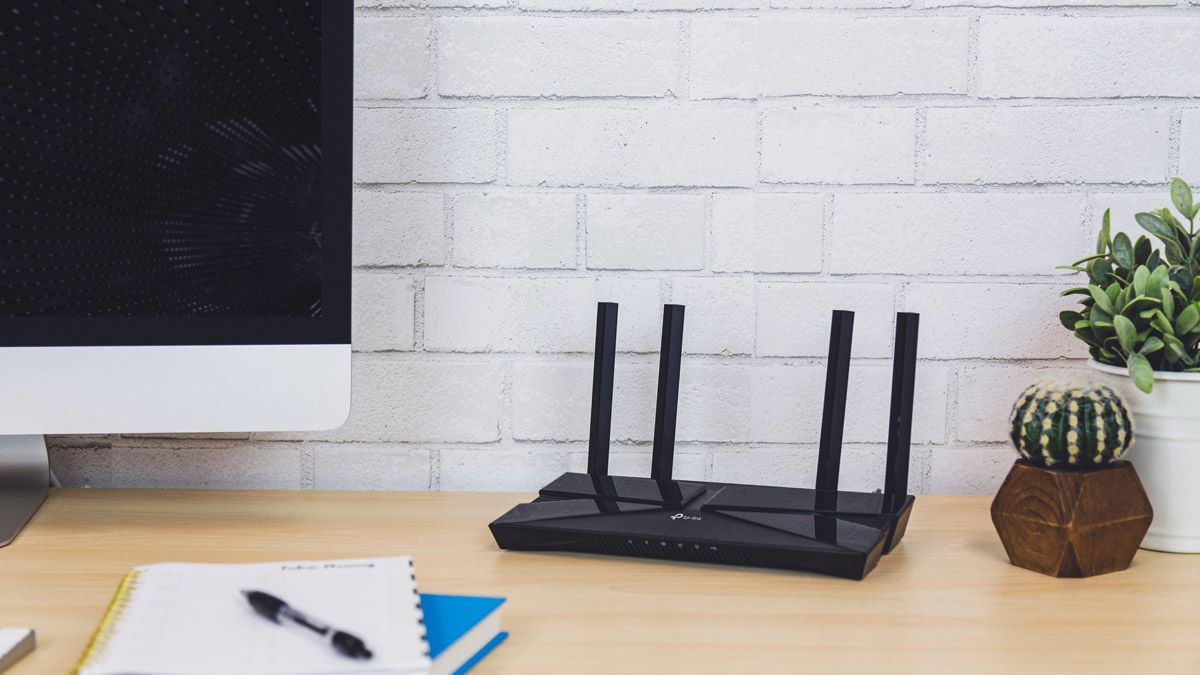Quick Links
So the marketing for your Wi-Fi router promises a certain speed but your experience with the router doesn't live up to that speed. What gives? Here's why you're not getting the advertised experience.
Before we jump into talking about why your router's speed is less than what the box advertised, let's narrow down the scope of this article immediately.
We're starting from the position that your internet connection is functioning as expected (speed tests look good, your Wi-Fi signal is strong, and you've used these tips to optimize your Wi-Fi) but you're not getting the speed you expect based on your router's specs.
The Router's Advertised Speed Is Theoretical
The speeds advertised on the box and in the documentation for a particular router are the theoretical maximum speed the router can sustain under perfect conditions and when paired with an equal or better test device in a lab. We discuss this in detail in our article on how to decode the letters and numbers in Wi-Fi router names, but here's a quick overview:
Let's say you have a router that is labeled as AC1900. That letter and number combination indicates the generation of Wi-Fi (AC is generation 5) and the maximum bandwidth the router can sustain under ideal conditions (in this case, 1900 Mbps across all the router bands/radios.)
When you're using your iPhone, Xbox One, or whatever device on your Wi-Fi network, you are limited to the connection that device has negotiated with the Wi-Fi router. Unless you happen to be using a modern device with an ancient single-band router (in which case you could potentially actually max out the available bandwidth) you'll never see a single device use all the bandwidth a router has to offer.
On that AC1900 router, for instance, the bandwidth is divided between a single 2.4Ghz band that maxes out at a theoretical 600 Mbps and a 5 GHz band that maxes out at 1300 Mbps. Your device will either be on one band or the other, and can't take advantage of the full capacity of the router.
Maximum Device Speeds Are Theoretical, Too
While we're talking about theoretical speeds, it's also important to note that the maximum speed for a single band is also largely theoretical. A device using Wi-Fi 5 (802.11ac) on the 5GHz band can theoretically get up to 1300 Mbps but in practice, it will only get a fraction of that.
Because of overhead in the Wi-Fi protocol, you can expect anywhere from 50-80% of the expected "advertised" speed based on your gear. Newer routers paired with newer devices are more efficient, older devices and older routers, are less so.
If you run a speed test on a gigabit connection and your Wi-Fi device only gets a portion of that speed it's to be expected. It's also, by the way, why you shouldn't use your phone for speed tests.
Unfortunately, there's no way to use tips, tricks, or hacks to get around this limitation. The difference between the way router and device speeds are advertised and the way they are actually realized during real-world use is always going to be out of alignment.
Your Devices Are Slower Than Your Router
Assuming you're not running into Wi-Fi issues because you have an ancient router, the individual clients are likely the bottleneck. Even under ideal conditions, there's a good chance that your router can run circles around your devices in terms of transmission power and bandwidth capacity.
If you have a router with a 4x4 MIMO capability, for instance, but the devices you're connecting to the router only support 2x2 MIMO, then it's impossible for that device to even begin to approach the maximum speed the router can handle.
As of the time of this article, April 2022, configurations greater than 2x2 MIMO are rarely found outside of routers or Wi-Fi access points. Some Apple laptops have 3x3 setup, and a few high-end Dell laptops have a 4x4 setup, but nearly everything else only has 2x2 MIMO. So even if your router is a Wi-Fi 6 (802.11ax) router and your devices support Wi-Fi 6, there is still an imbalance of radio arrangement and transmission power between your device and the router.
Until most devices sport the hardware equivalent to the router and have similar transmission power, you'll always be limited by the device.
So What Should You Do About It?
If your concern was simply that the speed you saw in speed tests or when downloading large files didn't match what you expected, there's really nothing you should do about it now that you know why it happens.
There aren't really any day-to-day activities where maxing your Wi-Fi connection to get closer and closer to that theoretical speed matters that much. How much bandwidth you need for various internet activities is surprisingly low. Even an old Wi-Fi 3 (802.11g) router has enough bandwidth capacity to stream HD video to your smart TV or iPhone.
In fact, what matters more than any individual device getting a blazing fast single connection to your router is the ability of your router to support multiple devices with ease. For the vast majority of people, it's far more useful to have a router that can handle a household full of Wi-Fi devices than to have a router that can deliver their entire broadband bandwidth capacity to one device. Nobody needs a gigabit connection fire-hosed to their iPhone, they need that connection properly allocated across all the smartphones and devices in the house.
If you found yourself reading this article not because some benchmarks had you curious why you weren't getting the advertised router speed you expected, but because your Wi-Fi devices are struggling and basic home internet activities like streaming video and gaming are a laggy mess, a router upgrade is probably in order. Assuming you have an adequate broadband connection, the culprit is almost always that your router can't keep up with the demands your household imposes.
For the vast majority of people, they don't need more bandwidth, they need better device management and bandwidth allocation---and a shiny new current generation router has the hardware to make that happen.


